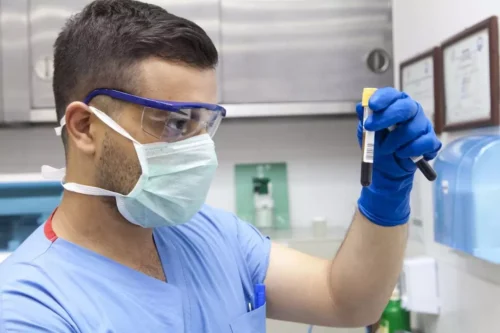
This amount is equal to one 12-ounce bottle of beer or wine cooler, one 5-ounce glass of wine, or 1.5 ounces of distilled spirits. The prevalence of AKA in a given community correlates with the incidence and distribution of alcohol abuse in that community. American Addiction Centers (AAC) is committed to delivering original, truthful, accurate, unbiased, and medically current information. We strive to create content that is clear, concise, and easy to understand.
When to See a Healthcare Provider

If history does not rule out toxic alcohol ingestion as a cause of the elevated anion gap, serum methanol and ethylene glycol levels should be measured. Similar to illness, the body reacts to injury by releasing elevated levels of hormones, which lead to high blood sugar. Therefore, people with diabetes who have had an injury or recent surgery should look out for DKA symptoms and check their blood sugar levels often. Alcoholic ketoacidosis (AKA) is a serious metabolic condition that can arise from excessive alcohol consumption combined with inadequate food intake. Healthcare professionals diagnose AKA through a combination of clinical evaluation and specific laboratory tests. The condition is further exacerbated by lipolysis, which releases free fatty acids into the bloodstream, and intravascular volume contraction.
Symptoms and Signs of Alcoholic Ketoacidosis
- Alcoholic ketoacidosis is attributed to the combined effects of alcohol and starvation on glucose metabolism.
- Diabetic eye disease (i.e., retinopathy) is another troublesome tissue complication of diabetes and one of the leading causes of blindness in the United States today.
- In rare cases, however, the condition also may affect people with type 2 diabetes.
- We strive to create content that is clear, concise, and easy to understand.
- Acetyl CoA may be metabolised to carbon dioxide and water, converted to fat, or combined with another acetyl CoA to form acetoacetate (fig 11).
- Alcohol produces structural changes in human liver mitochondria within days.
- The diagnosis of AKA is primarily based on the history of alcohol consumption and clinical findings indicative of ketoacidosis without significant hyperglycemia.
Alcoholic ketoacidosis is a recognised acute complication in alcohol dependent patients. Given the frequency with which the condition is seen in other countries, the possibility exists that many cases may be unrecognised and misdiagnosed in UK EDs. AKA should be included in the differential diagnosis of alcohol dependent patients presenting with acute illness. Management is based around exclusion of serious pathology and specific treatment for AKA where it is present. A possible link between AKA and sudden death in chronic alcoholism has been proposed but remains unconfirmed.
Consensus Recommendations on the Treatment of Opioid Use Disorder in the Emergency Department
How severe the alcohol use is, and the presence of liver disease or other problems, may also affect the outlook. People with this condition are usually admitted to the hospital, often to the intensive care unit (ICU). The most important consideration is finding a treatment that’s best suited to you and your individual needs and also takes into account your specific mental health or other medical concerns so you can start the path to recovery. After finishing his medical degree at the University of Auckland, he continued post-graduate training in New Zealand as well as Australia’s Northern Territory, Perth and Melbourne. He has completed fellowship training in both intensive care medicine and emergency medicine, as well as post-graduate training in biochemistry, clinical toxicology, clinical epidemiology, and health professional education.
Lactic acidosis occurs when ethanol metabolism results in a high hepatic NADH/NAD ratio, diverting pyruvate metabolism towards lactate and inhibiting gluconeogenesis. In peripheral tissues, where NADH levels are lower, this lactate may be converted to pyruvate for metabolic needs. Pyruvate and lactate are then maintained in steady state at much higher levels than normal. This results in a decrease in circulating lactic acid and an increase in acetoacetate.
BOX 1 PRESENTING FEATURES OF AKA
Glucose comes from the food you eat, and insulin is produced by the pancreas. When you drink alcohol, your pancreas may stop producing insulin for a short time. Without insulin, your cells alcohol ketosis dangerous won’t be able to use the glucose you consume for energy. Additionally, hyperthyroidism causes metabolism to be quicker; therefore, medications like insulin will be eliminated faster.

Decreased insulin and elevated glucagon, cortisol, catecholamine, and growth hormone levels can increase the rate of ketogenesis. Alcoholic ketoacidosis most commonly happens in people who have alcohol use disorder and chronically drink a lot of alcohol. But it can happen after an episode of binge drinking in people who do not chronically abuse alcohol. Alcoholic ketoacidosis doesn’t occur more often in any particular race or sex. Detection of acidosis may be complicated by concurrent metabolic alkalosis due to vomiting, resulting in a relatively normal pH; the main clue is the elevated anion gap.
- It can be helpful to understand the basic guidelines for alcohol consumption so you can determine whether you are drinking above recommended levels and engaging in potentially harmful alcohol use.
- The identification of these signs and symptoms is critical in diagnosing AKA, as they often point healthcare providers towards the condition in conjunction with a patient’s alcohol use history.
- Gluconeogenesis, which also occurs primarily in the liver, involves the formation of new glucose molecules from alanine and glycerol.
- Excessive alcohol consumption often causes malnourishment (not enough nutrients for the body to function well).
- This is an undesirable consequence in people with diabetes, where hyperglycemia can be brought on quickly and should be treated as soon as possible.
Interestingly, the risk of retinopathy was independent of the men’s ability to control their blood sugar, suggesting that alcohol may directly damage the eyes or related structures. Glycogen is a large molecule that consists of numerous glucose molecules and serves as a storage form of glucose in the tissues, particularly the liver. In the fasting state, as a first line of defense against hypoglycemia, glycogen is broken down into its constituent glucose molecules, which are secreted by the liver into the blood to maintain normal or near-normal blood sugar levels.


Among their many functions, insulin and glucagon regulate the conversion of fat molecules (i.e., fatty acids) into larger molecules (i.e., triglycerides), which are stored in the fat tissue. In the absence of insulin, the triglycerides are broken down into free fatty acids, which are secreted into the bloodstream and delivered to the liver. The liver normally re-incorporates free fatty acids into triglycerides, which are then packaged and secreted as part of a group of particles called very low-density lipoproteins (VLDL). In patients with ketoacidosis, however, the liver metabolizes the incoming free fatty acids in an additional, unusual way.